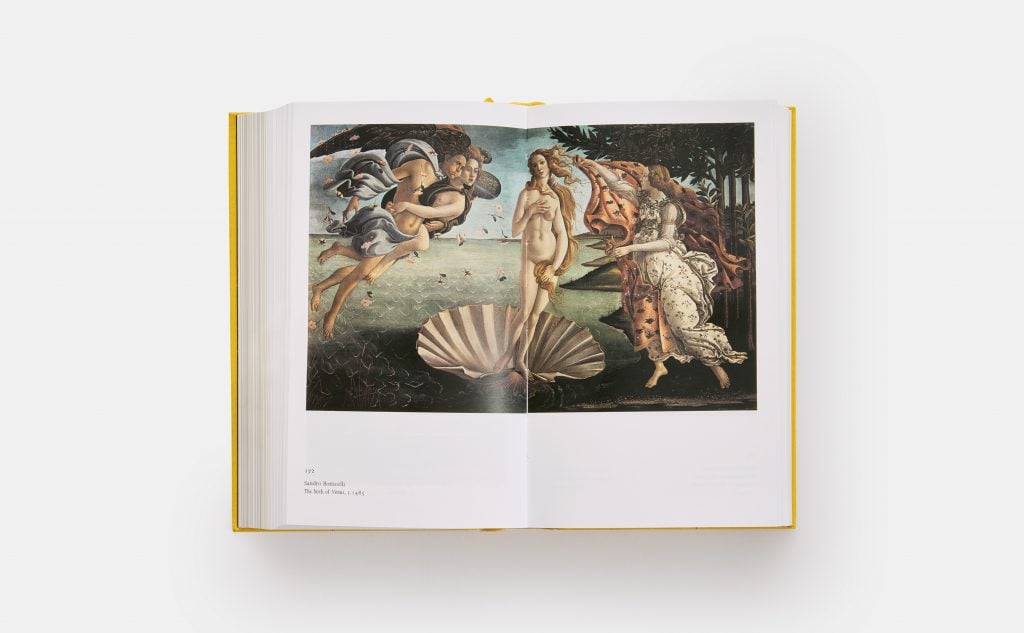Art
Why Historian E.H. Gombrich’s ‘The Story of Art’ Has Stood the Test of Time
The following is excerpted from The Story of Art by E.H. Gombrich, with a new preface by Leonie Gombrich (©2023, released in the U.S. May 3, 2023). Reproduced by permission of Phaidon. All rights reserved.
Preface to the pocket edition
There are no bad reasons for liking a picture. This is the conviction expressed by my grandfather, E.H. Gombrich, in the opening pages of this book—his best-selling introduction to art, first published in 1950 and enjoyed by millions of readers around the world since. When questioned, as he frequently was, about his own artistic preferences, he generally demurred, insisting that he would not ‘give marks’ to paintings. Tastes change, after all. Perhaps it is because this is not a book about tastes, but the story of the fresh challenges that artists identify and tackle from generation to generation, that it has retained its own freshness for each generation of readers.

E. H. Gombrich. Picture credit: Pino Guidolotti
It mattered greatly to my grandfather that many of his most fervent readers have always been, themselves, artists—artists who felt a kinship, through his interpretation, with the efforts of their forebears. Reading it today, it is undeniable that some of the writer’s language is of its time, as are his assumptions about the world that his original reader would have inhabited. Yet despite these historical realities, his telling of the story of art has, over the decades, proved to have a relevance that resists the passing of time—a relevance rooted in our recognition of the universality and importance of the human urge to create, invent and make anew.
In the case of the book you now hold in your hand, the Story of Art has itself, in a sense, been made anew, although the interior remains unchanged. My family are as indebted as was my grandfather to the new generations at Phaidon Press for rising so well to the challenge of reinvention. The sequence of prefaces included here form an interesting mini-history of the different editions in which Gombrich’s narrative has been made available to the public. This pocket format is the latest in a series of thoroughly satisfying reissues.
When the first pocket edition appeared in 2006, five years after my grandfather’s death, I, like many, regretted the disappearance of the illustrative tailpiece originally included at the end of each chapter, as Gombrich describes in his preface to the first edition. The redesign rendered these images contextless, just as the first design had made them necessary—and for modern readers, they can still be seen in the full-sized sixteenth edition, which remains available.

The Story of Art. E.H. Gombrich, with a new preface by Leonie Gombrich, Revised pocket format. Photo: Phaidon.
I was also doubtful of the wisdom, for the pocket edition, of departing from Gombrich’s firmly-held principle of ensuring that images should always appear on the same page as the text in which they are referenced: a principle that caused publisher, designer and author many a tricky conundrum over the years, but which has been greatly appreciated by countless readers. The publisher’s solution was to provide the book with two ribbons, so that the reader can flip effortlessly between text and image. So concerned was I about the deviation from my grandfather’s principle that I felt I must test the arrangement thoroughly. So, I read the re-designed book, and I am very happy to attest that the two-ribbon system works perfectly. Indeed, uncluttered by text as they are in this format, the images gain a clarity that proves to be an unexpected benefit of the pocket edition’s design.

The Story of Art. E.H. Gombrich, with a new preface by Leonie Gombrich, Revised pocket format. Photo: Phaidon.
Best of all, though, was that my test brought me once more into the uninterrupted company of my grandfather. Although I frequently have reason to read other things he wrote, I had not revisited his Story of Art in its entirety for many years. To be honest, I had only meant to re-read a chapter or two—to test those ribbons—but the lucidity, intelligence and sheer humanity of his words drew me on, as they have so many readers past and to come. I remembered what a wonderful companion and guide he was, never more so than when visiting the treasures housed in a museum, gallery, palace or place of worship.
Tastes may change, but for anyone who wants to understand why particular artworks of the past line walls around the world—and why we, today, might care that they do—that tale is here. With this lovely pocket edition, you, too, can take my grandfather with you, and see this world unfold.
Leonie Gombrich, October 2022

Art
Ukrainian sells art in Essex while stuck in a warzone – BBC.com
[unable to retrieve full-text content]
Ukrainian sells art in Essex while stuck in a warzone BBC.com

Source link
Art
Somerset House Fire: Courtauld Gallery Reopens, Rest of Landmark Closed
The Courtauld Gallery at Somerset House has reopened its doors to the public after a fire swept through the historic building in central London. While the gallery has resumed operations, the rest of the iconic site remains closed “until further notice.”
On Saturday, approximately 125 firefighters were called to the scene to battle the blaze, which sent smoke billowing across the city. Fortunately, the fire occurred in a part of the building not housing valuable artworks, and no injuries were reported. Authorities are still investigating the cause of the fire.
Despite the disruption, art lovers queued outside the gallery before it reopened at 10:00 BST on Sunday. One visitor expressed his relief, saying, “I was sad to see the fire, but I’m relieved the art is safe.”
The Clark family, visiting London from Washington state, USA, had a unique perspective on the incident. While sightseeing on the London Eye, they watched as firefighters tackled the flames. Paul Clark, accompanied by his wife Jiorgia and their four children, shared their concern for the safety of the artwork inside Somerset House. “It was sad to see,” Mr. Clark told the BBC. As a fan of Vincent Van Gogh, he was particularly relieved to learn that the painter’s famous Self-Portrait with Bandaged Ear had not been affected by the fire.
Blaze in the West Wing
The fire broke out around midday on Saturday in the west wing of Somerset House, a section of the building primarily used for offices and storage. Jonathan Reekie, director of Somerset House Trust, assured the public that “no valuable artefacts or artworks” were located in that part of the building. By Sunday, fire engines were still stationed outside as investigations into the fire’s origin continued.
About Somerset House
Located on the Strand in central London, Somerset House is a prominent arts venue with a rich history dating back to the Georgian era. Built on the site of a former Tudor palace, the complex is known for its iconic courtyard and is home to the Courtauld Gallery. The gallery houses a prestigious collection from the Samuel Courtauld Trust, showcasing masterpieces from the Middle Ages to the 20th century. Among the notable works are pieces by impressionist legends such as Edouard Manet, Claude Monet, Paul Cézanne, and Vincent Van Gogh.
Somerset House regularly hosts cultural exhibitions and public events, including its popular winter ice skating sessions in the courtyard. However, for now, the venue remains partially closed as authorities ensure the safety of the site following the fire.
Art lovers and the Somerset House community can take solace in knowing that the invaluable collection remains unharmed, and the Courtauld Gallery continues to welcome visitors, offering a reprieve amid the disruption.
Art
Sudbury art, music festival celebrating milestone

Sudbury’s annual art and music festival is marking a significant milestone this year, celebrating its long-standing impact on the local cultural scene. The festival, which has grown from a small community event to a major celebration of creativity, brings together artists, musicians, and visitors from across the region for a weekend of vibrant performances and exhibitions.
The event features a diverse range of activities, from live music performances to art installations, workshops, and interactive exhibits that highlight both emerging and established talent. This year’s milestone celebration will also honor the festival’s history by showcasing some of the artists and performers who have contributed to its success over the years.
Organizers are excited to see how the festival has evolved, becoming a cornerstone of Sudbury’s cultural landscape. “This festival is a celebration of creativity, community, and the incredible talent we have here in Sudbury,” said one of the event’s coordinators. “It’s amazing to see how it has grown and the impact it continues to have on the arts community.”
With this year’s milestone celebration, the festival promises to be bigger and better than ever, with a full lineup of exciting events, workshops, and performances that will inspire and engage attendees of all ages.
The festival’s milestone is not just a reflection of its past success but a celebration of the continued vibrancy of Sudbury’s arts scene.

-

 News22 hours ago
News22 hours agoTaxi driver suspected in fatal B.C. hit-and-run has left Canada: RCMP
-

 News23 hours ago
News23 hours agoSingh claps back at Poilievre ahead of House return
-

 News22 hours ago
News22 hours agoMore than 67 million people watched Donald Trump and Kamala Harris debate. That’s way up from June
-

 News22 hours ago
News22 hours agoThe ancient jar smashed by a 4-year-old is back on display at an Israeli museum after repair
-

 Sports21 hours ago
Sports21 hours agoCanada’s Stakusic, partner Savinykh lose in doubles quarterfinals at Guadalajara Open
-

 News23 hours ago
News23 hours agoMounties say there’s no evidence Lytton, B.C., wildfire was arson; cause unknown
-
News10 hours ago
Local Toronto business story – Events Industry : new national brand, Element Event Solutions
-

 News21 hours ago
News21 hours agoSouthern Baptist trustees back agency president but warn against needless controversy



















